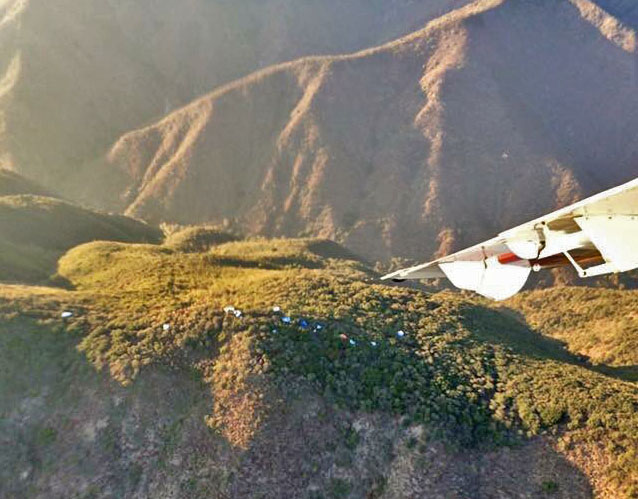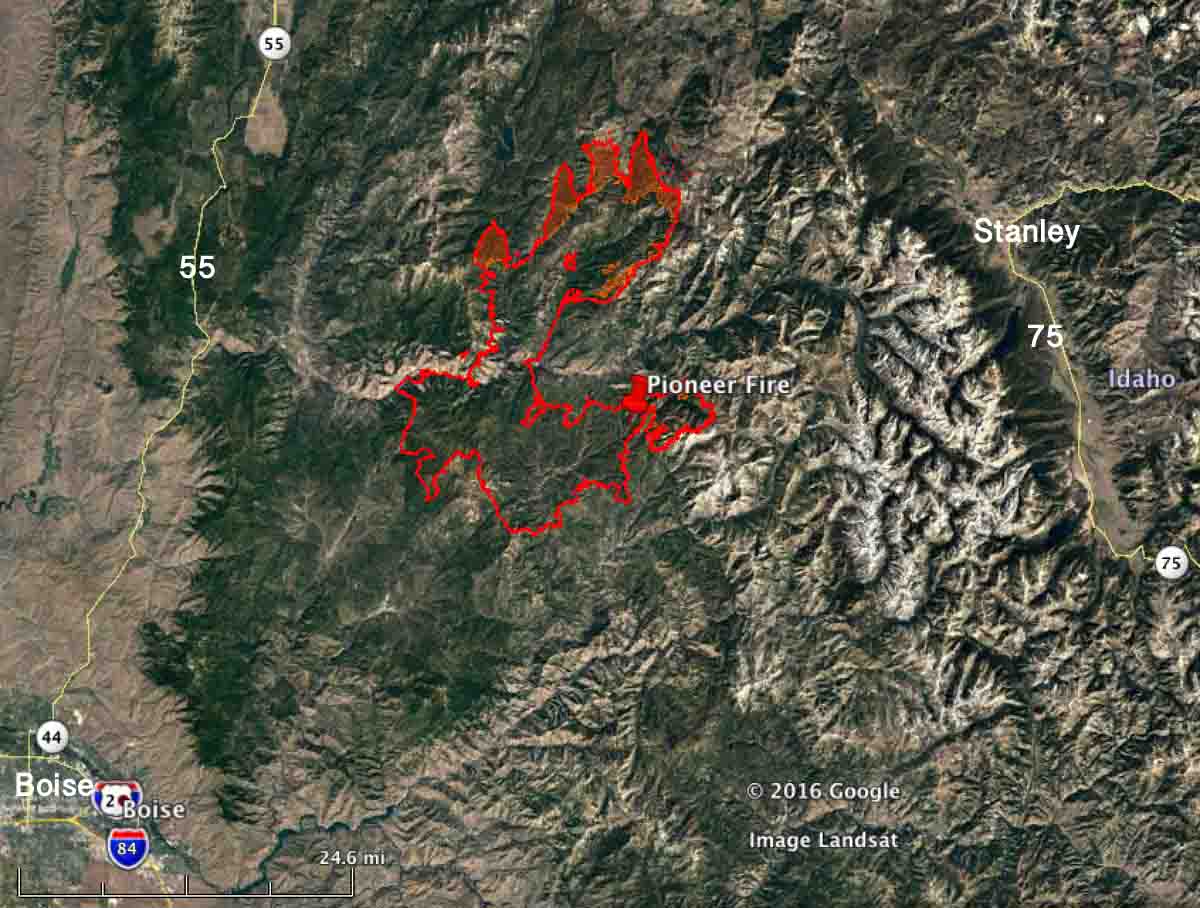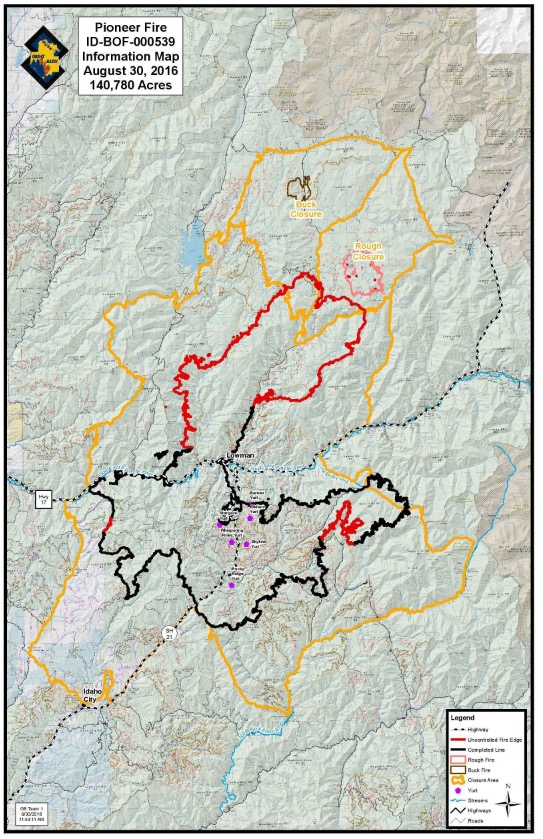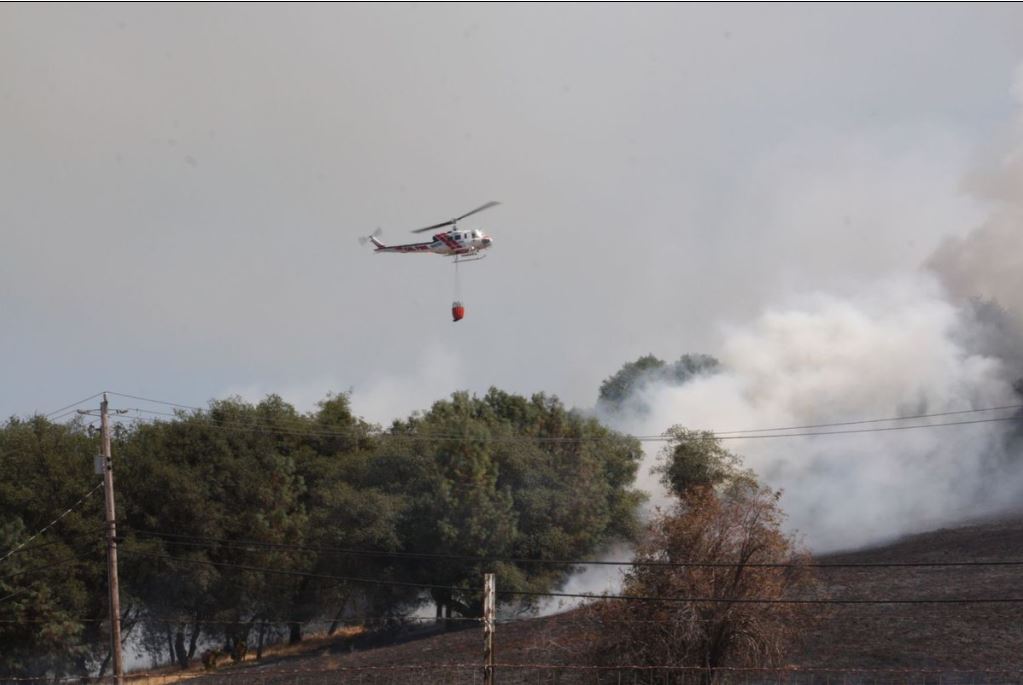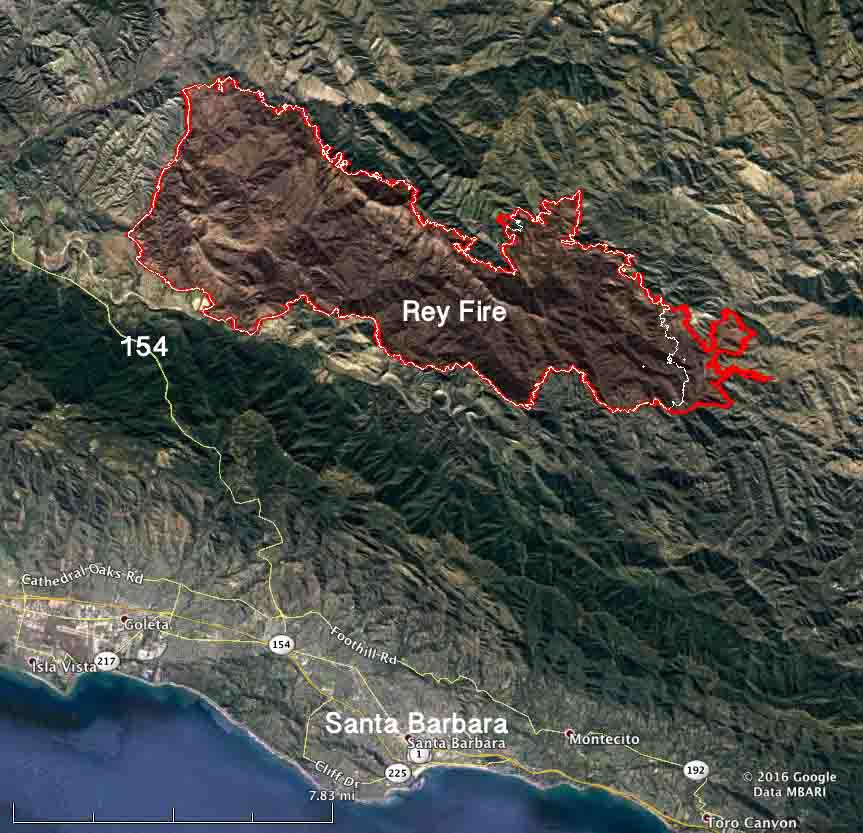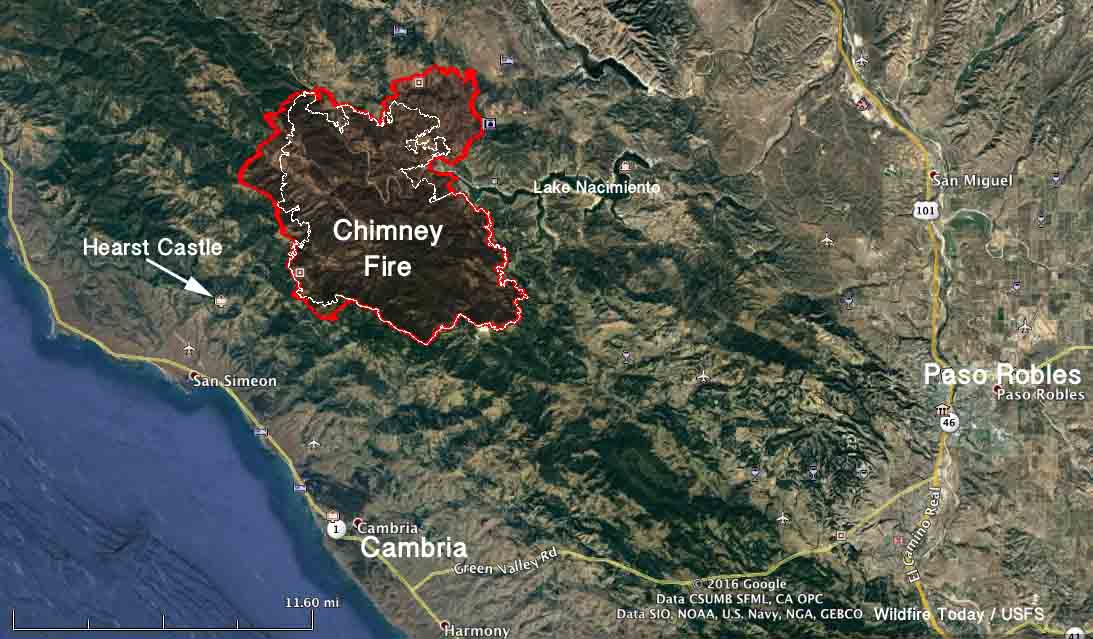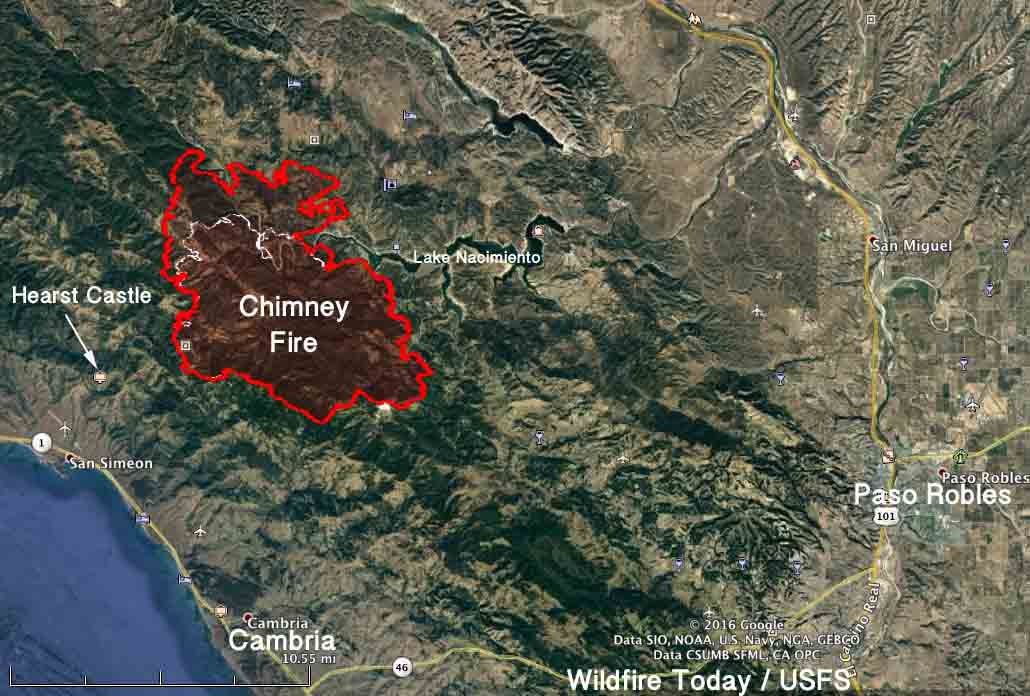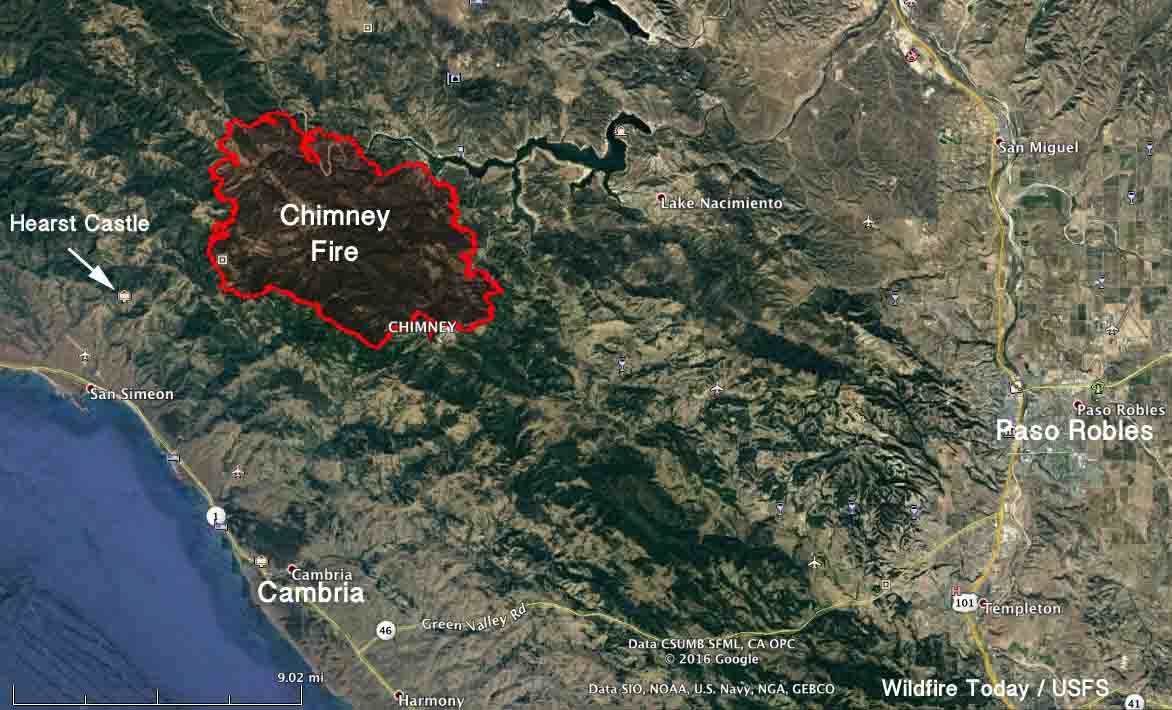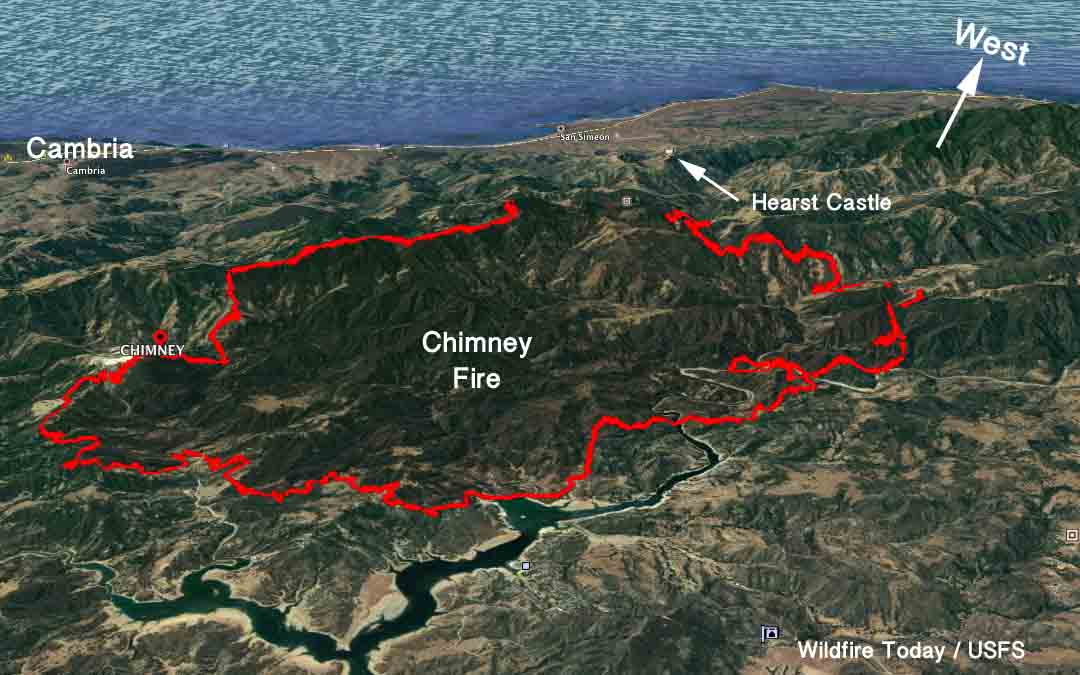Above: Smokejumpers descend over the Holy Fire August 31, 2016. USFS photo.
(Originally published at 11:08 a.m. PDT September 1, 2016. Updated at 1:44 p.m. PDT September 1, 2016)
Until yesterday smokejumpers had never parachuted into a fire on the Cleveland National Forest. This was the only National Forest in California that had not yet inserted jumpers in this manner. Occasionally jumpers are assigned to a fire but arrive in a conventional manner, on the ground.
They were ordered for the Holy Fire just off of Trabuco Creek Road 2.2 miles east of the city of Robinson Ranch in Orange County, California. The fire burned 155 acres between the road and the Bell View Trail at the top of the ridge above Trabuco Canyon. The fire ran to the top of the north-facing slope and stopped thanks to the efforts of firefighters on the ground, the change in topography and fuels, and the heavy use of helicopters and air tankers, including a DC-10.
Thursday morning there were 273 personnel assigned to the Holy Fire, which got its name from the nearby Holy Jim Canyon.
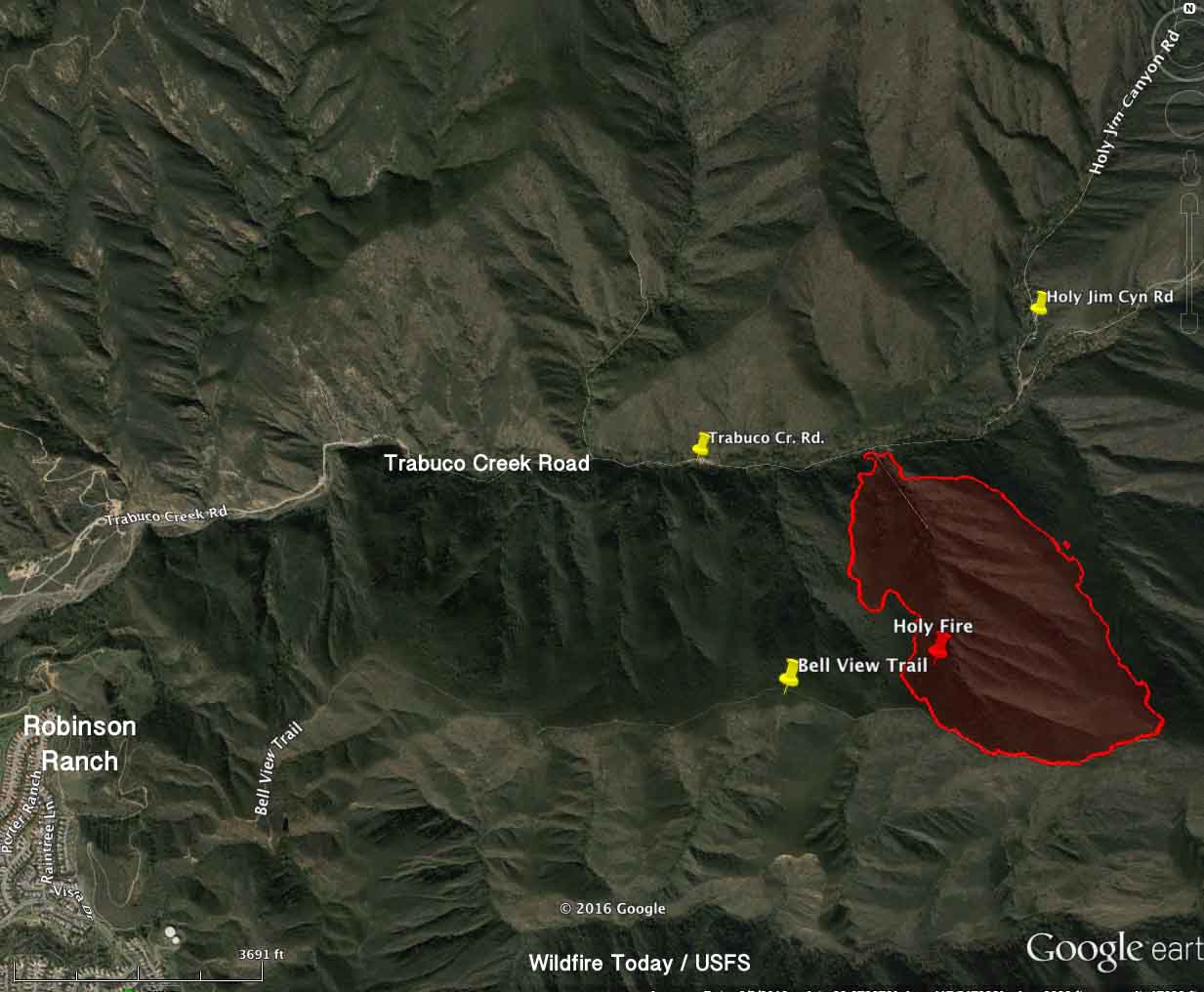
The Cleveland National Forest stretches between the greater Los Angeles metropolitan area and the outskirts of San Diego.
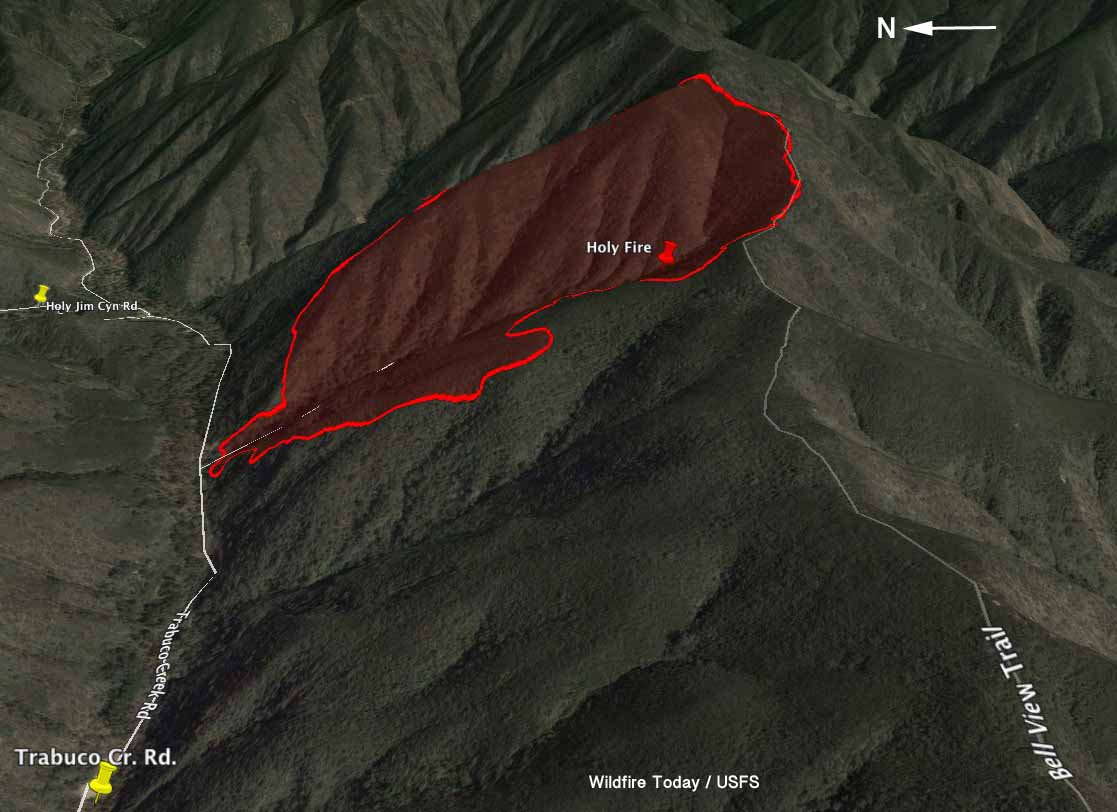
Jason Foreman with the Redding Smokejumpers said the 16 jumpers were dispatched from Redding and Porterville using a U.S. Forest Service Sherpa and a contract Dornier aircraft, each with 8 firefighters. The arrival of the Dornier out of Porterville was delayed due to the very busy air space in southern California. The jumpers from Porterville landed on the ground at approximately 6:30 p.m. PDT, while the Redding squad all completed their jumps by 7:50 p.m Wednesday, Mr. Foreman said.
“A critical piece of line needed to be secured in an expeditious manner. The terrain to get to the ridgeline was steep and had limited access” Olivia Walker, spokesperson for the Cleveland National Forest said when asked why local firefighters were not used instead of the smokejumpers. “There were no personnel available to staff the section of line that was used to insert the Smokejumpers on”, she explained.
Four firefighters suffered heat-related injuries and were extracted by helicopters. The fire was managed in a unified command with the U.S. Forest Service and the Orange County Fire Authority.
Access to the base of the fire was via Trabuco Creek Road. A 3-mile hike from Robinson Ranch on the Bell Ridge Trail would take you to the top of the fire. The terrain at the fire is very steep. Hikers on the trail would have a 1,500-foot elevation change — up.
